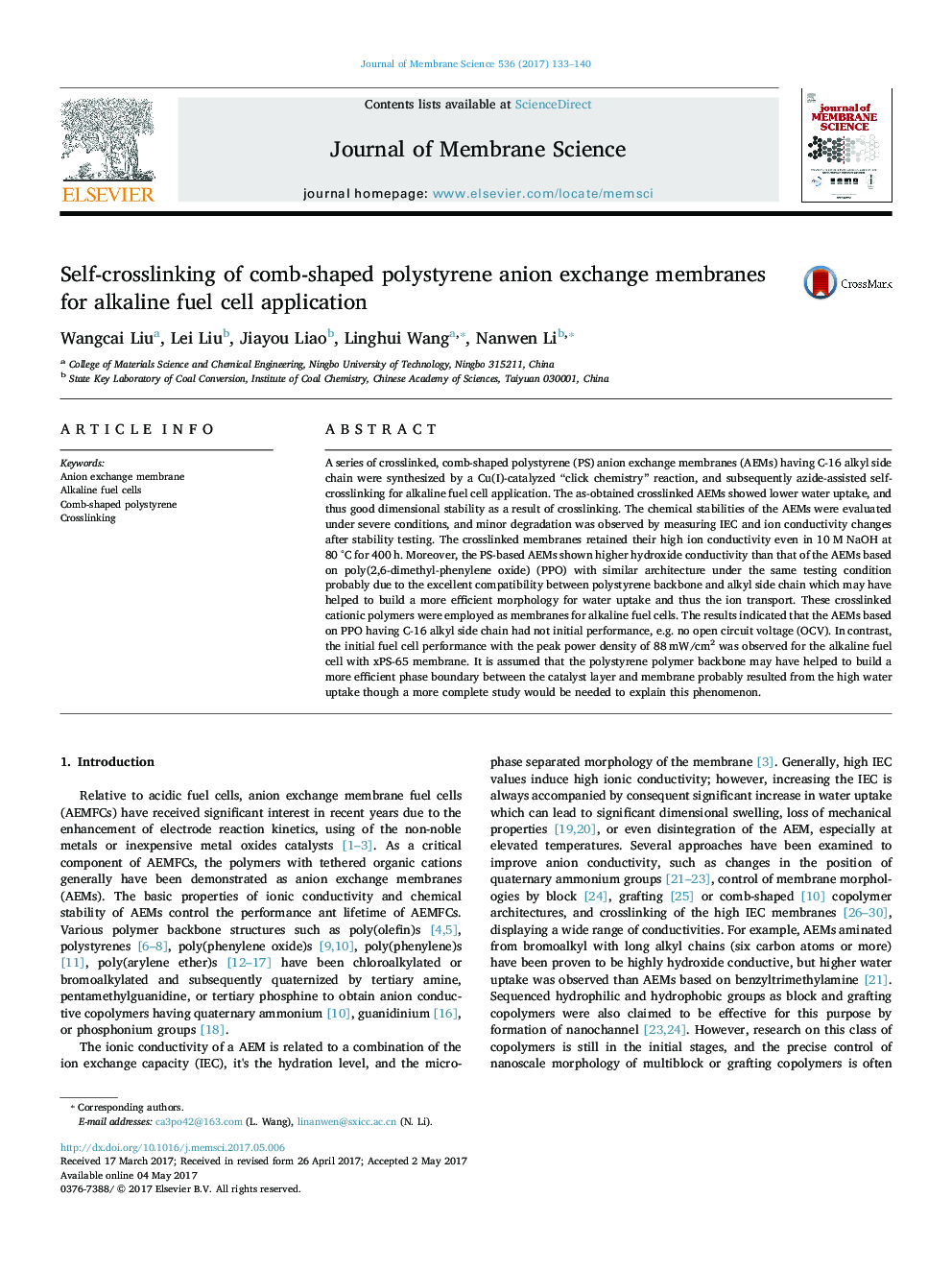| کد مقاله | کد نشریه | سال انتشار | مقاله انگلیسی | نسخه تمام متن |
|---|---|---|---|---|
| 4988943 | 1455963 | 2017 | 8 صفحه PDF | دانلود رایگان |
• Self-crosslinking of comb-shaped polystyrene has been developed for as alkaline fuel cells operable anion exchange membrane (AEM).
• The AEMs exhibited suppressed swelling, excellent alkaline stability while high OH-conductivities were observed.
• The as-obtained AEMs showed good initial fuel cell performance.
A series of crosslinked, comb-shaped polystyrene (PS) anion exchange membranes (AEMs) having C-16 alkyl side chain were synthesized by a Cu(I)-catalyzed “click chemistry” reaction, and subsequently azide-assisted self-crosslinking for alkaline fuel cell application. The as-obtained crosslinked AEMs showed lower water uptake, and thus good dimensional stability as a result of crosslinking. The chemical stabilities of the AEMs were evaluated under severe conditions, and minor degradation was observed by measuring IEC and ion conductivity changes after stability testing. The crosslinked membranes retained their high ion conductivity even in 10 M NaOH at 80 °C for 400 h. Moreover, the PS-based AEMs shown higher hydroxide conductivity than that of the AEMs based on poly(2,6-dimethyl-phenylene oxide) (PPO) with similar architecture under the same testing condition probably due to the excellent compatibility between polystyrene backbone and alkyl side chain which may have helped to build a more efficient morphology for water uptake and thus the ion transport. These crosslinked cationic polymers were employed as membranes for alkaline fuel cells. The results indicated that the AEMs based on PPO having C-16 alkyl side chain had not initial performance, e.g. no open circuit voltage (OCV). In contrast, the initial fuel cell performance with the peak power density of 88 mW/cm2 was observed for the alkaline fuel cell with xPS-65 membrane. It is assumed that the polystyrene polymer backbone may have helped to build a more efficient phase boundary between the catalyst layer and membrane probably resulted from the high water uptake though a more complete study would be needed to explain this phenomenon.
Journal: Journal of Membrane Science - Volume 536, 15 August 2017, Pages 133–140
